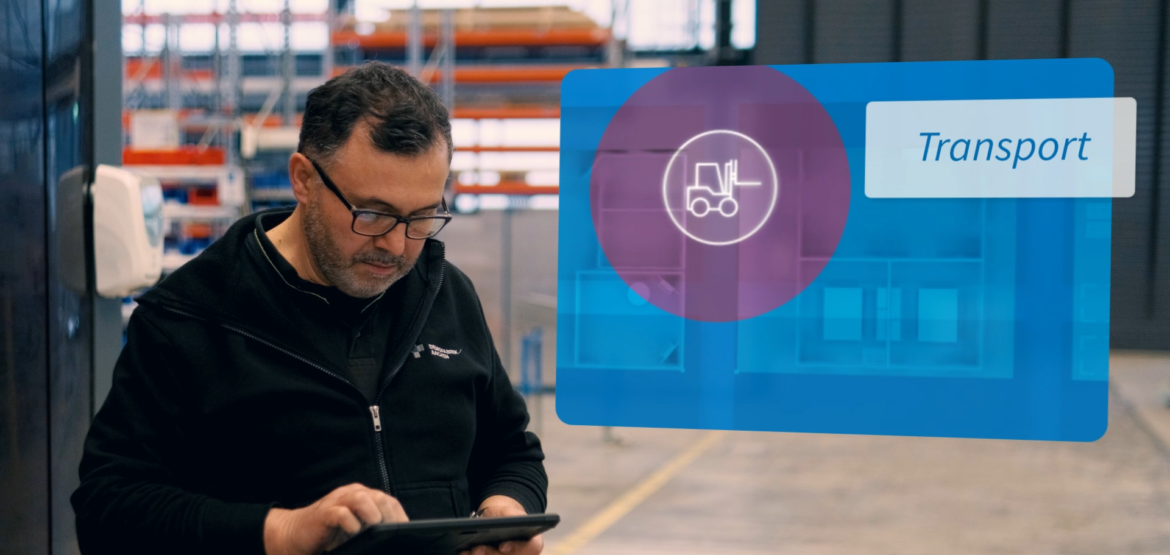17. May 2021
Together with Ubisense and Deutsche Telekom, the Center Connected Industry tested the possibilities of real-time localization using mobile networks within the factory floor and combined them with the existing UWB installation to create interoperable tracking.
In the selected example use case in intralogistics, this allows devices and products to be tracked seamlessly throughout the factory with the necessary precision, making the position data usable for location-based process control.
How it works:
For existing Ubisense UWB tracking, for example, boxes of materials are tagged with UWB tags that emit a pulse every 100 milliseconds.
Based on the signals received by sensors permanently installed in the hall, the position of the material boxes can be determined to an accuracy of about 10cm.
The advantage of this technology is its high precision; the disadvantage is the currently still high number of sensors required and the associated installation costs.
This technology has now been supplemented by Deutsche Telekom and localization via mobile radio in campus networks.
The project evaluated how well positioning works in a real factory environment, since indoor localization with mobile communications has so far been tested mainly in the laboratory.
For this purpose, several LTE radio dots were installed in the hall and the deviations between actual and measured position were calculated at defined measuring points.
The advantages of this technology are the high coverage provided by a comparatively small number of dots and the simultaneous use of the hardware of industrial mobile radio networks; the disadvantages are still a high degree of inaccuracy and latency in determining the position.
To test this indoor localization with mobile radio, a system from Telekom based on an interoperability platform from Omlox was installed, in which localization with LTE radio dots was tested.
What we did:
Both technologies were compared and integrated into a showcase.
This showcase based on Center Connected Industry, Ubisense with Smart Space and Telekom with Omlox can be seen in this video:
https://www.youtube.com/watch?v=mLRorKMO808
What the project revealed:
Indoor localization by cellular is not quite as accurate as localization by UWB positioning on which the project is based, but it is perfectly sufficient for rough localization.
Advantages:
With the help of interoperable real-time localization that can cover the entire industrial campus, positioning technologies can be deployed in a way that is adapted to the requirements of the use cases.
In addition, there are opportunities for deriving key performance indicators, such as throughput times and utilization, as well as optimizing hall layout and other exciting use cases.
Important to know:
Real-time localization in industrial campus networks is under development and is currently not a finished product.


